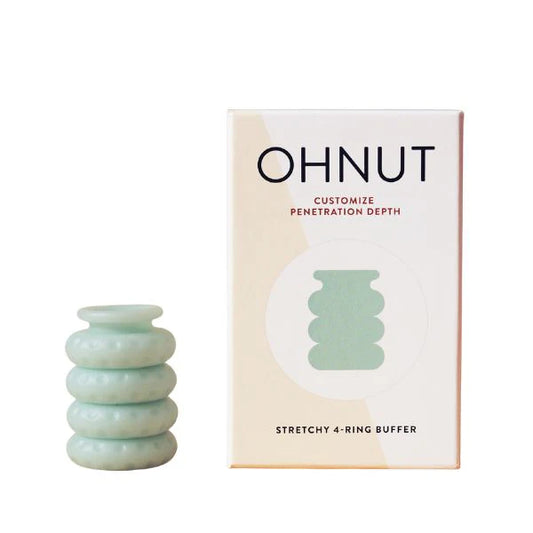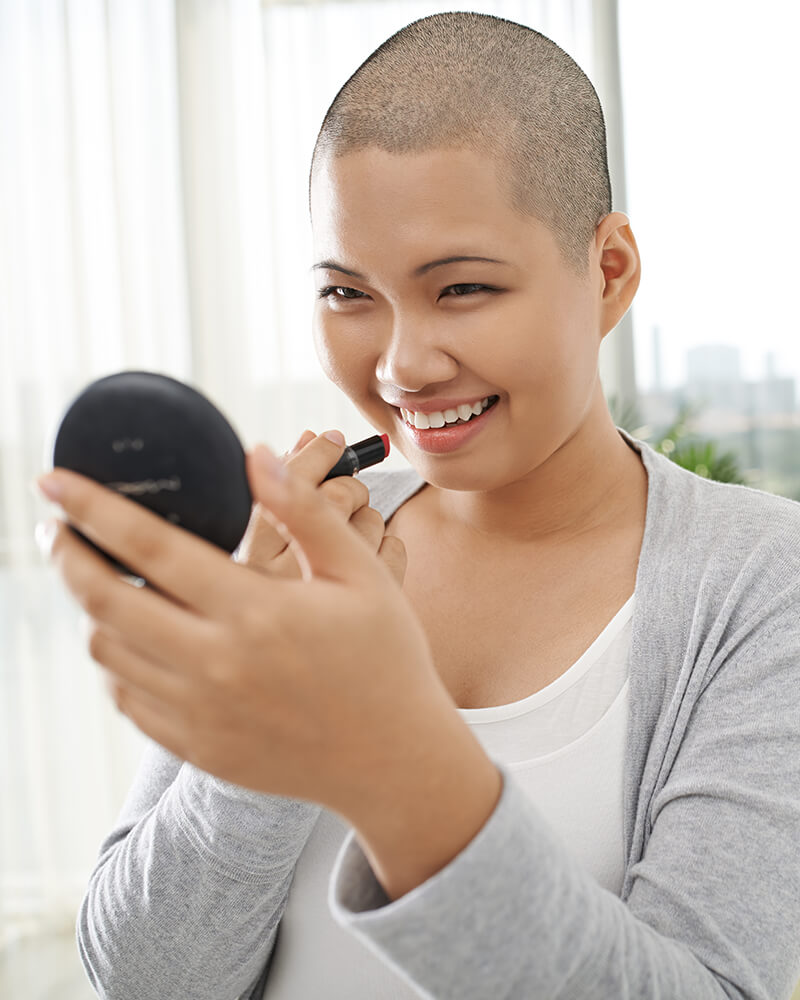
Chronic conditions
Living well with chronic pelvic pain
If you have chronic pelvic pain you don’t need us to tell you just how frustrating and isolating it can be. We know that reaching a conclusive diagnosis and finding effective ways to manage the pain and symptoms can feel like a giant puzzle that can never fully be solved.But there are ways to treat and manage chronic pelvic pain so that you can live a full, happy and joyful life.
Written by Emma McGeorge
Related Conditions
Want to learn more about related conditions? Follow the links below to gain a better understanding of the symptoms and treatments.
Chronic pelvic pain, what is it?
Chronic pelvic pain can be described as steady or intermittent pain in the pelvic region that lasts for six months or more. It can be caused by just about any organ, system or disease in the body and has multiple contributing factors for example, injury, coexisting conditions, stress, immune function, gut health and inflammation.
Causes and conditions
Causes of chronic pelvic pain include (but are definitely not limited to):
- Endometriosis
- Musculoskeletal problems such as pelvic floor disorders, inflammation of the pubic joint (pubic symphysis) or hernia
- Chronic pelvic inflammatory disease that usually occurs when a long-term infection, often sexually transmitted, causes scarring to pelvic organs
- Ovarian remnant where a small piece of the ovary is accidentally left inside a person after surgical removal of the uterus, ovaries and fallopian tubes. The remnant can develop painful cysts
- Fibroids or noncancerous uterine growths that can cause pressure or a feeling of heaviness in your lower abdomen.
- Fibromyalgia
- Irritable bowel syndrome
- Painful bladder syndrome (interstitial cystitis)
- Pelvic congestion syndrome where enlarged, varicose-type veins around the uterus and ovaries cause pain
- Pudendal neuralgia
- Urinary tract or other pelvic infections
- Vaginismus (or pelvic floor myalgia or levator myalgia)
- Dyspareunia (painful sex)
Vulvodynia (vestibulodynia, vulvar vestibulitis syndrome and localized provoked vulvodynia) which is pain, burning or discomfort in the vulva that doesn’t have an identifiable cause
Overlap of conditions
Any of those conditions are painful and complex enough on their own. But many women with pelvic pain issues actually have more than one thing going on.
Reports suggest that 80-90 % of women with endometriosis also have interstitial cystitis (IC).
Many people with IC also suffer from chronic fatigue syndrome, and many people with IC also have fibromyalgia.
Infact, there's about a 15% overlap between IC and chronic fatigue, fibromyalgia, scleroderma and other collagen vascular type diseases (which are immune system disorders).
Finally, around 39% of women with chronic pelvic pain also report experiencing symptoms of irritable bowel syndrome.
Our bodies are not made up of a series of distinct systems. Every single organ and system is interconnected. And the function of one organ or system can have broad and complex impacts on every other system in our body, leading to widespread pain in some cases.
So, when we’re talking about chronic pelvic pain it can be useful to consider how some of these systems interact, and how they can contribute to the overall picture of pain, treatment and management.
.png)
Inflammation, dysfunction and pain
Inflammation is the body’s first response when faced with pain or injury.
When you’re injured, molecules in your body rush to the site of the incident to stop bleeding, fight free radicals and promote healing. Ever had a sprained ankle? It swells up (inflammation) then goes down as the injury heals.
Chronic pain is different because the site continues to send pain signals even when the dysfunction or injury has healed.
A little bit of inflammation is super functional, but ongoing inflammation can contribute to a negative cycle of pain and dysfunction.
The impact of gut health and IBS on chronic pelvic pain is a clear example of how the inflammation, dysfunction and pain triad works.
The gut is a key player in immune system function and in regulating inflammation in the body. Put simply, gut health issues can lead to inflammation in the body.
This inflammation can contribute to, and worsen chronic pelvic pain. And that pelvic pain can lead to even more inflammation. (more on this in a future post).
Stress and pain
Just like inflammation, stress is a totally normal and healthy physiological response.
Faced with a threatening situation (real or imagined, emotional or physical) changes take place in the body to help us take action to avoid or defend against danger.
The nervous system releases hormones, our heart rate and breathing quickens, muscles tighten, blood pressure rises, and our senses become sharper. This physical response is an automatic process and it’s super important in keeping us alive.
The problem is, our nervous system doesn’t know the difference between actual life-and-death situations and more generic stressors.
Basically, anything that disrupts the normal homeostatic state of the body (aka life) will activate the stress response. In other words, life happens; stress follows! And we need to get smart about how we manage it.
Because the more our stress response is activated, the easier it is to trigger and the harder it becomes to shut it down.
Walking around in a heightened state of stress hugely impacts our bodily functions and is a major contributor to chronic pelvic pain conditions, pelvic floor disorders, and widespread pain.
And again, it can be a negative cycle. Dealing with chronic pelvic pain can cause increased stress, which in turn contributes to the pain and symptoms you might be experiencing.
Other contributing factors
The autonomic, peripheral and central nervous system, the fascial system, the lymphatic system, the complex interplay of hormones and so many other systems and functions in the body can contribute to chronic pelvic pain.
We could write a book with all of the information and solid research out there on chronic pelvic pain and how the systems of the body interact to contribute to ongoing pain and dysfunction.
But we think you get the picture! Our bodies are complex, interconnected, beautiful, and at times infuriating systems.
Chronic pelvic pain help
When it comes to something as complex as chronic pelvic pain there’s no one size fits all solution. And, frustratingly, what might work for you at one point in time may not work again in the future.
Finding the right tools, treatments and support to manage chronic pain really is a personal journey. And it often involves quite a bit of trial and error.
Given how interconnected the systems of the body are, it pays to look at things holistically and consider how you can address your overall stress levels, immune function, gut health (are you using a quality probiotic?), and inflammation. Diet, exercise, sleep and emotional well-being all play a big part, too.
Learning how to advocate for yourself and empowering yourself with knowledge can help you navigate the long journey. As can learning about yourself, your body and your own personal triggers for pain.
Diet, weather changes, certain activities like driving a car, your posture, where you’re at in your menstrual cycle, your emotional wellbeing and stress can all have different impacts for different people. Learning your triggers, how to recognise them and how to get on top of them more effectively can make a huge difference in how you manage your pain, as can activities like pelvic floor physical therapy when appropriate for addressing pelvic pain.
We get that it can all feel a bit overwhelming and hopeless, so we always recommend that the first step should be finding a great pelvic health physio who can guide and advise you. Chances are, over time, you’ll be building a whole team of professionals - from chiros, naturopaths and acupuncturists to GPs, surgeons and gynecologists - to help you find ways to manage your pain.
Here at The Pelvic Hub, we’re committed to finding products that work to complement any treatment plan you have and support you to take care of your pelvis.
Have you been recommended vaginal dilator therapy?
Vaginal dilators, also known as pelvic trainers, can help you learn how to control, and relax, your pelvic floor muscles. They can help you retrain your body to feel ok with stimulus, and warm you up to sex or other activities if you’re feeling apprehensive or need to prepare your tissues and muscles.
Intimate Rose dilators are specially made from resilient silicone rubber to have a comfortable, natural texture. And they can be chilled to ease pain or warmed for extra comfort. They’re also thoughtfully and beautifully-made, designed by a pelvic health physical therapist.
Is your vagina dry or grippy or do you have pain during sex?
Using an intimate wearable that allows you to control the depth of penetration during sex can help you feel safe and relaxed. The Ohnut is designed to feel just like skin. It’s so comfortable (like a gentle hug) you and your partner will barely notice it’s there. And it can help you and your partner explore the boundaries of your body in a way that allows you to connect and enjoy each other.
We also have lubricants and moisturizers to get things working again. They’re natural, nourishing and made from the highest quality ingredients to help you feel good about taking care of your body after all it’s been through.
Are you experiencing burning, itching, stinging or pain?
Our TendHer reusable perineal cooling pads are perfect for cooling or warming your sensitive and delicate areas. They’re great for before dilation therapy or internal trigger point massage and can relax and calm the area. They’re also excellent post intercourse if you have pain or you want to soothe the area if you tend to flare after intimate times with your partner.
Comfortable, cooling and discreet. No-one will know you are wearing it— it can be our little secret. Bonus! You can also use TendHer pads warm to bring soothing comfort to your abdomen on crampy days.
Pelvic pain is a real bummer, but better days are ahead! Hang in there as you find the solution(s) that are best for you!
Related Products
-
 Sold out
Sold out -







